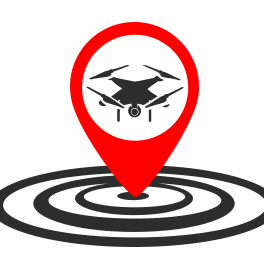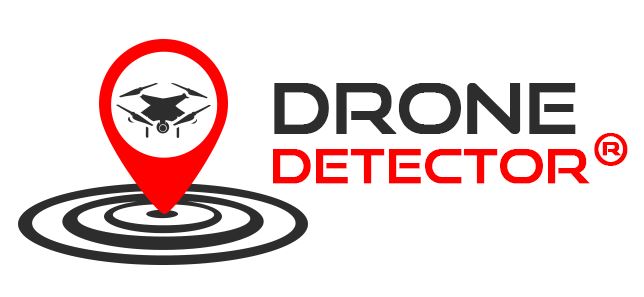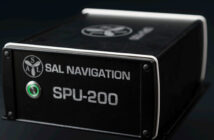
 Another drone was discovered flying in restricted air space around the White House recently. The Secret Service found the pilot simply because they happened to see him. In other words, there is no indication that the Secret Service would have found the pilot if he had not been in plain view.
Another drone was discovered flying in restricted air space around the White House recently. The Secret Service found the pilot simply because they happened to see him. In other words, there is no indication that the Secret Service would have found the pilot if he had not been in plain view.
This person didn’t have bad intentions, but one day someone will.
A little drone-detection education is in order:
Audio Detection
Audio detection does NOT work in urban environments—period. Most microphones only listen well at 25 to 50 feet so, because of the ambient noise in the area, any audio detection method would be rendered useless at 1600 Pennsylvania Avenue. It is also too simple for an operator to change the sound signature of a drone by buying different propellers or making other modifications. It doesn’t take much to defeat the many weaknesses of audio detection.
Video Detection
Video detection is a useful tool, but with some limitations. Cameras can see out to about 350 feet but have a very difficult time distinguishing birds from drones. Basically, anything flying in the air is a “drone” as far as a camera is concerned. Even by utilizing computer algorithms that look at flight patterns, the prevailing thought is that a bird will fly a more random pattern than a drone would. Unfortunately, as we have discovered, this notion fails in a place where birds glide. An excellent example of this is seagulls. They will ride wind currents and stay at a steady level, and this fools video systems.
Thermal Detection
Thermal detection has an effective range of about 350 feet for recreational drones. Much like audio detection, thermal detection would have had little success detecting the two drone incidents at the White House because the intruding drones, like most recreational drones, don’t produce a lot of heat. They are mostly plastic with electric motors. Thermal detection would pick up a bird more readily than it would pick up a drone in most cases.
However, thermal detection would have been perfect for spotting the human-flown gyrocopter that crash landed on the White House lawn recently. That vehicle was gas-powered and produced plenty of heat relative to the environment, so thermal detection could detect those vehicles that would typically need gas-powered engines to carry larger payloads.
Radar Detection
 Radar is the traditional mechanism for detecting flying vehicles. We know that radar is already deployed at the White House but it did not detect either drone. Much like thermal, radar has a hard time picking up these small, plastic, electric-powered drones because that is not what they were created to do. Radar used to detect traditional aircraft can be modified to detect small drones but it will also detect birds and if a drone alert was issued every time a bird flew too close to the White House, security personnel would turn off the cameras before the day was out.
Radar is the traditional mechanism for detecting flying vehicles. We know that radar is already deployed at the White House but it did not detect either drone. Much like thermal, radar has a hard time picking up these small, plastic, electric-powered drones because that is not what they were created to do. Radar used to detect traditional aircraft can be modified to detect small drones but it will also detect birds and if a drone alert was issued every time a bird flew too close to the White House, security personnel would turn off the cameras before the day was out.
Radio Frequency (RF) Detection
The most effective way to detect drones is with radio frequency (RF) methodology, and Drone Detector is the only system utilizing that technology. It has a long range, about 1400 feet, and is difficult to circumvent. Only a truly skilled person could create a drone that would get past radio frequency detection. Certainly the two drones that invaded the White House, a DJI Phantom and a Parrot BeBop, would have been instantly caught by Drone Labs’ system.
Unlike other methods, RF detection can do more than just identify that a drone is nearby. Within this vector we can glean the following:
- GPS coordinates of the drone
- Altitude of the drone
- GPS coordinates of the pilot
- Unique identifier of the drone
We can gather enough additional data to not only find the drone but to find its operator, and with the unique identifier we can definitively prove that a particular incursion was done using a specific drone. In other words, we can provide enough evidence for criminal prosecution.
Layers of Protection
Because we use several layers of detection (audio, RF, and soon thermal and radar) instead of relying on a single technique, we can allow for known and unknown drone types. Our plan is simple, quickly identify known drone types and raise an alarm or examine the data for unknown drone types to determine if it is actually a drone or something else. Attached is a visual representation of how we could provide minimal protection for the White House if and when the Secret Service asks….
What Now?
All this discussion is wasted if action isn’t taken. As noted earlier, Drone Labs has called the Secret Service several times to offer our help pro bono, and have heard nothing in response, which seems strange because it’s quite obvious that they have no solution.





